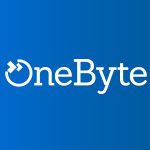
This thought leadership article was originally posted on LinkedIn by Marnie, VP, HCM Practice at OnActuate.
Did you follow the news in Canada? About 155,000 public sector employees across Canada were on strike. Essential government services such as tax refunds, passport renewals, and citizenship applications were delayed during these strikes.
These issues revolve around contract negotiations with the Government of Canada and the labour unions representing the public sector workers, but it’s a lesson in employee and employer relations that all organizations can learn from.
How does the public sector attract and recruit top talent, while building trust with employees to retain them? The answer is to look at the top workforce trends happening in 2023 and invest in technology that can support the necessary changes.
Technology for employee and employer relations
Human Capital Management (HCM) technology is the natural evolution from simple Human Resources technology. Instead of just payroll and employee profiles, modern HCM tech can give you a full view of the employee life cycle. Now employers can use HCM tech for job postings, recruitment, onboarding, hiring, professional development, payroll, time and attendance, scheduling, benefits, termination, and retirement. HCM technology helps manage employees and builds the relationship between employer and employee by giving self-serve options, access on desktops and mobile, and recognition and rewards for excellent work.
What do employees want?
In Ceridian’s recently released 2023 Pulse on Talent Report, a striking 49% of survey respondents expressed that flexibility and work-life balance are their top priorities. Surprisingly, among respondents aged 18-24, 44% valued flexibility even more than compensation, which came in at 41%. This highlights the increasing significance of flexibility in the workplace, and the public sector should take note and explore areas where they can adapt to meet this demand. In fact, one of the big issues in dispute regarding the strikes in Canada was flexible work options, a topic of considerable discussion and debate since the pandemic.
- Flexibility in location: The rise of remote and hybrid work continues to be a major trend in 2023. As employees increasingly work from home or other locations, organizations are seeking ways to ensure their workforce remains connected and engaged. HCM technology can play a pivotal role in solving this challenge, providing tools for remote collaboration, performance management, and training to facilitate seamless virtual work environments.
- Work-life balance for well-being: Another key aspect of flexibility is work-life balance, which is becoming an increasingly important focus in 2023 for overall employee well-being. Companies that offer flexible schedules and allow employees to set their own working hours recognize the positive impact on work-life balance, employee retention, and satisfaction. HCM technology can support this by providing scheduling tools and calendars to ensure everyone on the team is aware of working hours. Additionally, if wellness programs, employee assistance programs, and mental health support is offered, HCM can be the tool used to easily access the information that employees are looking for.
- Non-traditional career growth: The traditional concept of climbing the corporate ladder is no longer the sole aspiration for many employees. According to the 2023 Pulse on Talent report, only 17% of respondents expressed a desire to be senior leaders, and a mere 14% were interested in people management roles. Instead, there is a rising demand for upskilling and gaining experience without the need for a managerial title and associated responsibilities. This is why employees are increasingly seeking mentorship programs and internal mobility opportunities. HCM technology can support this flexibility in career growth by empowering employees and managers to collaboratively create personalized career plans that align with individual aspirations and organizational goals.
Employees are the most valuable resource
Any public sector organization knows that delivery of services, especially those essential to the safety and health of constituents, will be greatly affected due to scarce resources – such as employees. That’s why it’s important to keep public sector employees happy and motivated and continue building trust and transparency so public sector organizations can continue to do the same for their constituents.
Webinar alert!
Want to learn more about utilizing HCM technology to build the employee and employer relationship? Attend our virtual panel with our partner Ceridian on Tuesday, June 20 at 2 p.m. EST.








